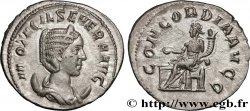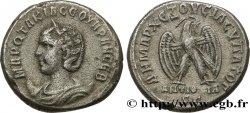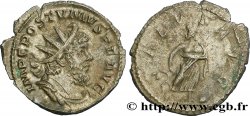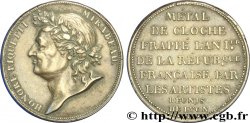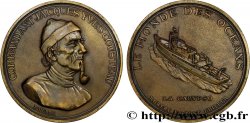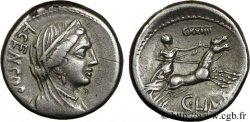bpv_154043 - OTACILIA SEVERA Tétradrachme syro-phénicien
Not available.
Item sold on our e-shop
Price : 170.00 €
Item sold on our e-shop
Price : 170.00 €
Type : Tétradrachme syro-phénicien
Date: 248
Mint name / Town : Antioche, Syrie, Séleucie et Piérie
Metal : billon
Diameter : 28,00 mm
Orientation dies : 6 h.
Weight : 16,08 g.
Rarity : R1
Coments on the condition:
Bon centrage et flan, bonne frappe, faible usure légèrement visible sur les cheveux et le poitrail de l’aigle, bonnes surfaces
Catalogue references :
Obverse
Obverse description : Buste drapé et diadémé d’Otacilia Sévéra à droite, les cheveux remontés en tresse sur la tête, posé sur un croissant de lune, vu de trois quarts en avant (L15).
Obverse legend : MAR WTAKIL SEOUHRAN SEB
Obverse translation : (Marcia Otacilia Severa augusta).
Reverse
Reverse legend : ANTIOXIA / S|C À L’EXERGUE.
Reverse description : Aigle debout à gauche, les ailes largement déployées, tête et queue à droite, tenant une couronne feuillée dans son bec.
Reverse legend : DHMARC - EX OUSIAS UPATOG
Reverse translation : (Revêtu de la puissance tribunitienne / Consul pour la troisième fois / avec l’accord du Sénat d’Antioche).
Commentary
Cet exemplaire a un poids exceptionnellement élevé, une preuve supplémentaire de l’aspect fiduciaire de ces frappes ; la valeur est convenue et non liée au poids.
Les frappes de Philippe II datées du troisième consulat, comme celles d’Otacilie Sévère d’ailleurs, portent les titres de Philippe Père. Elles se distinguent entre elles par différents aigles de revers et un portrait à droite ou à gauche.
Il faut noter que si Philippe affectionne particulièrement la couronne radiée solaire dans ses frappes de tétradrachmes (sans que cela ait la moindre influence sur la valeur faciale de la monnaie, contrairement à ce qui se produit pour les antoniniens), tous les bustes de son épouse sont posés sur un croissant lunaire.
En abordant les frappes du 3e consulat, on remarque l’absence complète de frappes datées du deuxième consulat, bien que le deuxième consulat de Philippe et de sa famille existe indubitablement à Rome, y compris sur les émissions monétaires. Interruption des frappes ou comput différent à Antioche qu’à Rome ? Nous penchons pour la deuxième solution, pour deux raisons.
Tout d’abord la continuité stylistique : tant pour les revers que pour les droits, il n’y a pas de rupture, alors que l’on aurait pu présumer une certaine normalisation après une interruption des frappes. De plus, celle-ci se produira effectivement pour les frappes datées du quatrième consulat avec un style d’aigle unique, suivie à la fin par une nouveauté encore plus marquante, l’introduction d’officines indiquées sur les monnaies.
Ensuite, il existe à Antioche de très nombreuses frappes datées d’un quatrième consulat de Philippe l’Arabe dont nous ne trouvons pas trace à Rome. Il est extrêmement regrettable que les quelques informations dont nous disposons sur le Sénat d’Antioche soient largement plus tardives (4e et 5e siècle) car les émissions de tétradrachmes laissent à penser que non seulement le Sénat d’Antioche manifestait son indépendance envers Rome en frappant de l’argent avec la titulature “SC / ANTIOXIA” mais encore qu’il avait son propre comput impérial sous Philippe.
L’apparition de cette exergue et la disparition de la palme sont caractéristiques des 3e et 4e consulat mais les styles des aigles ne se normaliseront qu’au 4e.
On note que les sigma sont gravés en C.
Dans la base TSP maintenue par Michel Prieur, dix-neuf exemplaires sont maintenant répertoriés pour ce type, dont plusieurs en musées, ANS, Paris, Hunterian et Berne. Notre exemplaire, qui provient de la trouvaille dite de Turquie 1930, est le 0385_013.
This example has an exceptionally high weight, further evidence of the fiduciary aspect of these strikes; the value is agreed and not linked to the weight.
The coins of Philip II dated from the third consulate, like those of Otacilia Severus, bear the titles of Philip the Father. They are distinguished from each other by different reverse eagles and a portrait on the right or left.
It should be noted that while Philip was particularly fond of the radiating solar crown in his tetradrachm strikes (without this having the slightest influence on the face value of the coin, unlike what happens with the antoninianus), all the busts of his wife are placed on a lunar crescent..
When approaching the strikes of the 3rd consulate, we notice the complete absence of strikes dated from the second consulate, although the second consulate of Philip and his family undoubtedly existed in Rome, including on monetary issues.. Was the minting interrupted or was the calculation different in Antioch than in Rome? We are inclined to choose the second solution, for two reasons..
First of all, stylistic continuity: for both the backhands and the forehands, there is no break, whereas one might have assumed a certain standardization after an interruption in the strokes. Furthermore, this will actually occur for the strikes dated from the fourth consulate with a unique eagle style, followed at the end by an even more striking novelty, the introduction of offices indicated on the coins..
Then, in Antioch there are many strikes dated to a fourth consulate of Philip the Arab, of which we find no trace in Rome.. It is extremely regrettable that the little information we have on the Senate of Antioch is much later (4th and 5th century) because the issues of tetradrachms suggest that not only did the Senate of Antioch demonstrate its independence from Rome by minting coin with the title “SC / ANTIOXIA” but also that it had its own imperial computus under Philip.
The appearance of this exergue and the disappearance of the palm are characteristic of the 3rd and 4th consulate but the styles of the eagles will not become standardized until the 4th.
Note that the sigmas are engraved in C.
In the TSP database maintained by Michel Prieur, nineteen examples are now listed for this type, including several in museums, ANS, Paris, Hunterian and Berne. Our example, which comes from the so-called Turkey 1930 find, is 0385_013
Les frappes de Philippe II datées du troisième consulat, comme celles d’Otacilie Sévère d’ailleurs, portent les titres de Philippe Père. Elles se distinguent entre elles par différents aigles de revers et un portrait à droite ou à gauche.
Il faut noter que si Philippe affectionne particulièrement la couronne radiée solaire dans ses frappes de tétradrachmes (sans que cela ait la moindre influence sur la valeur faciale de la monnaie, contrairement à ce qui se produit pour les antoniniens), tous les bustes de son épouse sont posés sur un croissant lunaire.
En abordant les frappes du 3e consulat, on remarque l’absence complète de frappes datées du deuxième consulat, bien que le deuxième consulat de Philippe et de sa famille existe indubitablement à Rome, y compris sur les émissions monétaires. Interruption des frappes ou comput différent à Antioche qu’à Rome ? Nous penchons pour la deuxième solution, pour deux raisons.
Tout d’abord la continuité stylistique : tant pour les revers que pour les droits, il n’y a pas de rupture, alors que l’on aurait pu présumer une certaine normalisation après une interruption des frappes. De plus, celle-ci se produira effectivement pour les frappes datées du quatrième consulat avec un style d’aigle unique, suivie à la fin par une nouveauté encore plus marquante, l’introduction d’officines indiquées sur les monnaies.
Ensuite, il existe à Antioche de très nombreuses frappes datées d’un quatrième consulat de Philippe l’Arabe dont nous ne trouvons pas trace à Rome. Il est extrêmement regrettable que les quelques informations dont nous disposons sur le Sénat d’Antioche soient largement plus tardives (4e et 5e siècle) car les émissions de tétradrachmes laissent à penser que non seulement le Sénat d’Antioche manifestait son indépendance envers Rome en frappant de l’argent avec la titulature “SC / ANTIOXIA” mais encore qu’il avait son propre comput impérial sous Philippe.
L’apparition de cette exergue et la disparition de la palme sont caractéristiques des 3e et 4e consulat mais les styles des aigles ne se normaliseront qu’au 4e.
On note que les sigma sont gravés en C.
Dans la base TSP maintenue par Michel Prieur, dix-neuf exemplaires sont maintenant répertoriés pour ce type, dont plusieurs en musées, ANS, Paris, Hunterian et Berne. Notre exemplaire, qui provient de la trouvaille dite de Turquie 1930, est le 0385_013.
This example has an exceptionally high weight, further evidence of the fiduciary aspect of these strikes; the value is agreed and not linked to the weight.
The coins of Philip II dated from the third consulate, like those of Otacilia Severus, bear the titles of Philip the Father. They are distinguished from each other by different reverse eagles and a portrait on the right or left.
It should be noted that while Philip was particularly fond of the radiating solar crown in his tetradrachm strikes (without this having the slightest influence on the face value of the coin, unlike what happens with the antoninianus), all the busts of his wife are placed on a lunar crescent..
When approaching the strikes of the 3rd consulate, we notice the complete absence of strikes dated from the second consulate, although the second consulate of Philip and his family undoubtedly existed in Rome, including on monetary issues.. Was the minting interrupted or was the calculation different in Antioch than in Rome? We are inclined to choose the second solution, for two reasons..
First of all, stylistic continuity: for both the backhands and the forehands, there is no break, whereas one might have assumed a certain standardization after an interruption in the strokes. Furthermore, this will actually occur for the strikes dated from the fourth consulate with a unique eagle style, followed at the end by an even more striking novelty, the introduction of offices indicated on the coins..
Then, in Antioch there are many strikes dated to a fourth consulate of Philip the Arab, of which we find no trace in Rome.. It is extremely regrettable that the little information we have on the Senate of Antioch is much later (4th and 5th century) because the issues of tetradrachms suggest that not only did the Senate of Antioch demonstrate its independence from Rome by minting coin with the title “SC / ANTIOXIA” but also that it had its own imperial computus under Philip.
The appearance of this exergue and the disappearance of the palm are characteristic of the 3rd and 4th consulate but the styles of the eagles will not become standardized until the 4th.
Note that the sigmas are engraved in C.
In the TSP database maintained by Michel Prieur, nineteen examples are now listed for this type, including several in museums, ANS, Paris, Hunterian and Berne. Our example, which comes from the so-called Turkey 1930 find, is 0385_013







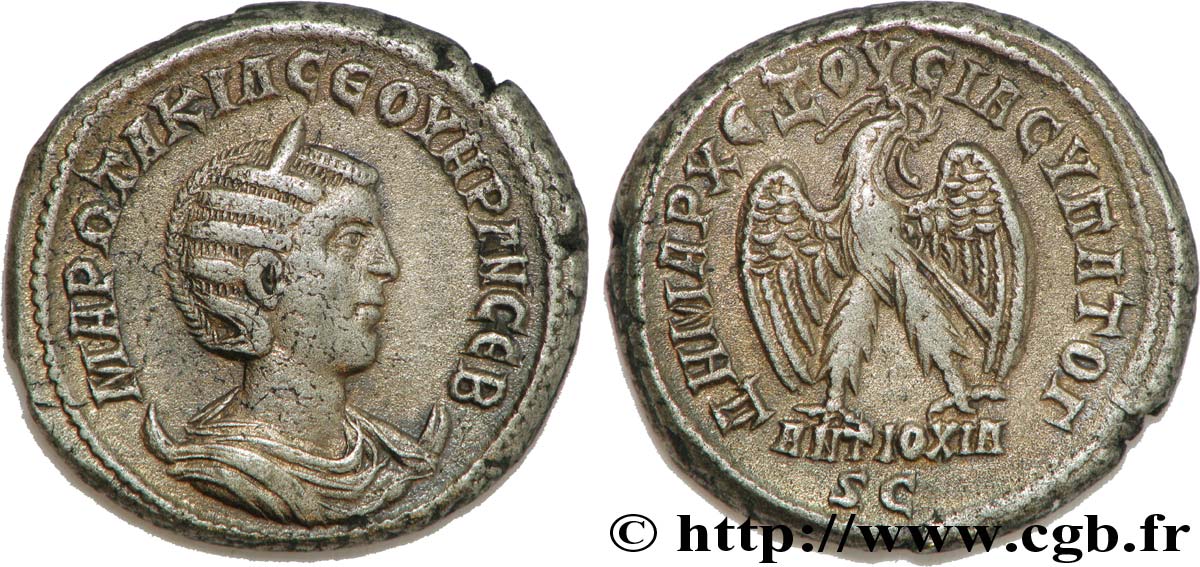
 Report a mistake
Report a mistake Print the page
Print the page Share my selection
Share my selection Ask a question
Ask a question Consign / sell
Consign / sell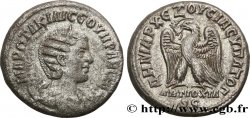
 Full data
Full data